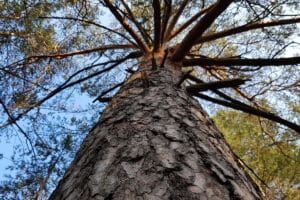Liquidity – the ability to convert assets into cash – generally worries investors, from institutions to hedge funds to individuals. In my research, I find that the issue of liquidity varies significantly by investor and over time, and that we are quick to generalize about the advantages and disadvantages of liquidity, especially in forestry. In the case of timberland, how can we frame liquidity in a way that provides context?
In this post, I summarize key themes on liquidity as an issue for timberland investors from the Q2 2024 Forisk Research Quarterly article “Topics on Forest Finance: Investment Criteria and Timberland Liquidity” and from the forthcoming 7th edition of Forest Finance Simplified.
Issues Related to Timberlands and Liquidity
In finance, liquidity is a construct that affects certain folks in certain situations; it does not affect everyone always. Liquidity is a problem when you need it and don’t have it. With timberland, liquidity comprises a set of issues that may relate or overlap. For example:
- Leverage: Debt differentiates during market crashes. While leverage has its role, timberland investors without debt cannot be compelled to liquidate during tough times with timber markets (though they may need to sell for non-timber obligations). For highly leveraged organizations, debt compresses time and reduces options.
- Valuations: If we view liquidity as a balance of buyers and sellers at any time, then in the absence of buyers or sellers, what is an asset worth? When traders scramble to pay debts and meet margin calls, they don’t sell what they should, they sell what they can. Investors in comparable situations act surprised when markets tank and buyers are nowhere to be found.
- Diversification: Part of what makes timberland attractive includes return characteristics that rely on some “independence” from the overall market, which we could call illiquidity. The “indifference” of timberland to other assets is part of what makes it diversifying. In practice, many assets are illiquid relative to cash, bonds, or equities. Cars and homes take weeks and months to buy or sell. While we can view this illiquidity as a constraint that limits short-term options, we can also see it as a protective moat that better preserves value (and wealth) for knowledgeable owners.
Plan Ahead to Manage Liquidity
At times, timberland investors need cash. For example, due to irregular harvest revenues – a normal case for smaller timberland ownerships – the owner may need supplementary funds from a partial sale, advance, or loan. In other words, the liquidity implications for timberlands are asset and investor specific. While it helps to plan how you might unload a timber tract in a crisis, you get part-way there by breaking down the forest into its salable components, including timber, hunting rights, and choice parcels. Each sizable timberland asset comprises a diversified portfolio of smaller assets. The issue of liquidity for timberland is rarely all or nothing.
Liquidity is largely a function of time horizon. Timber is a long-term play for long-term buyers and liquidity matters more for short-term sellers or investors reliant on significant leverage. Liquidity thrives during periods of stability and of growth. Crashes, panics, recessions, and blackouts dry up liquidity. Sizable investment assets, whether timberland or car dealerships, often comprise a diversified portfolio of smaller assets, inventories, and cash flows. The issue of liquidity is rarely all or nothing, and the best strategy remains to account for liquidity in advance.
This content may not be used or reproduced in any manner whatsoever, in part or in whole, without written permission of LANDTHINK. Use of this content without permission is a violation of federal copyright law. The articles, posts, comments, opinions and information provided by LANDTHINK are for informational and research purposes only and DOES NOT substitute or coincide with the advice of an attorney, accountant, real estate broker or any other licensed real estate professional. LANDTHINK strongly advises visitors and readers to seek their own professional guidance and advice related to buying, investing in or selling real estate.










Add Comment